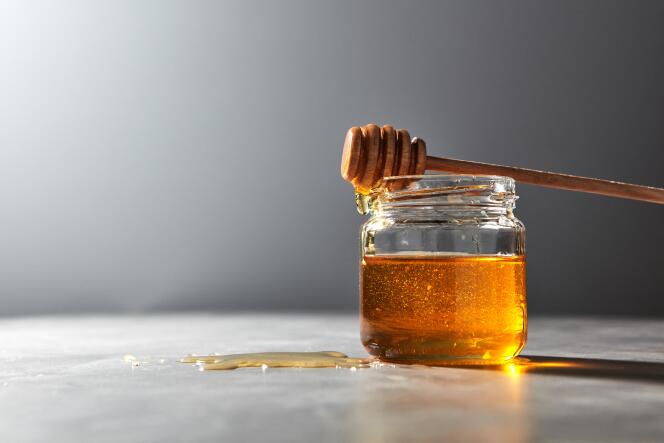
When the bees disappear, honey is not really honey anymore. A massive honey fraud has been revealed by the European Commission. "A significant proportion of honey imported into Europe is suspected of being fraudulent, but this honey is often not detected," said the services of the European executive, in a report published on Thursday, March 23.
According to the sampling and monitoring work conducted by Brussels, almost half of the honey from non-European countries is blended with sugar syrups made from rice, wheat or sugar beet. All additives are forbidden according to European regulations. Of the 320 batches of honey tested by the Joint Research Centre, the Commission's official laboratory, 147 were found to be fraudulent. That is 46% of the samples analyzed. This represents a significant proportion of the honey consumed in Europe. With 175,000 metric tons of honey imported per year (or about 40% of consumption), the Old Continent is the second largest importer of honey in the world after the United States. The "fake honey" that has been pinpointed comes mainly from China and Turkey.
Falsified traceability information
The European Commission's Directorate General for Health and Food Safety coordinated this large-scale control operation within the European Union, in collaboration with 16 European countries, as well as Norway, Switzerland and the European Anti-Fraud Office. Samples were taken at borders – mainly at European ports – between November 2021 and February 2022. Investigators further uncovered the use of additives and colorings to falsify the true botanical source of the honey and disguise the true geographic origin of the honey by falsifying traceability information and removing pollens.
Germany alone accounts for about one-third of European honey imports from third countries. Of the 32 samples taken in Germany, half were suspected of being fraudulent, mainly destined for the German market. France was not left behind. Of the 21 samples taken in France, only four were real honey. Five batches of suspected fraudulent honey were destined for the French market, while a dozen non-compliant batches were destined for Belgium, Germany, Greece, Spain and the Netherlands.
The rate of questionable batches is significantly higher than during the previous European control plan, conducted between 2015 and 2017. At that time, only 14% of the samples analyzed were non-compliant. "In the past, fraudsters diluted honey with sugar syrups made from corn starch or sugar cane," explained the association Foodwatch, which is behind a petition for more transparency on food fraud. "Knowing they were being monitored, they replaced them with syrups made mainly from rice, wheat or sugar beet, which the new methods developed by the European Commission's laboratory were able to detect."
You have 42.85% of this article left to read. The rest is for subscribers only.